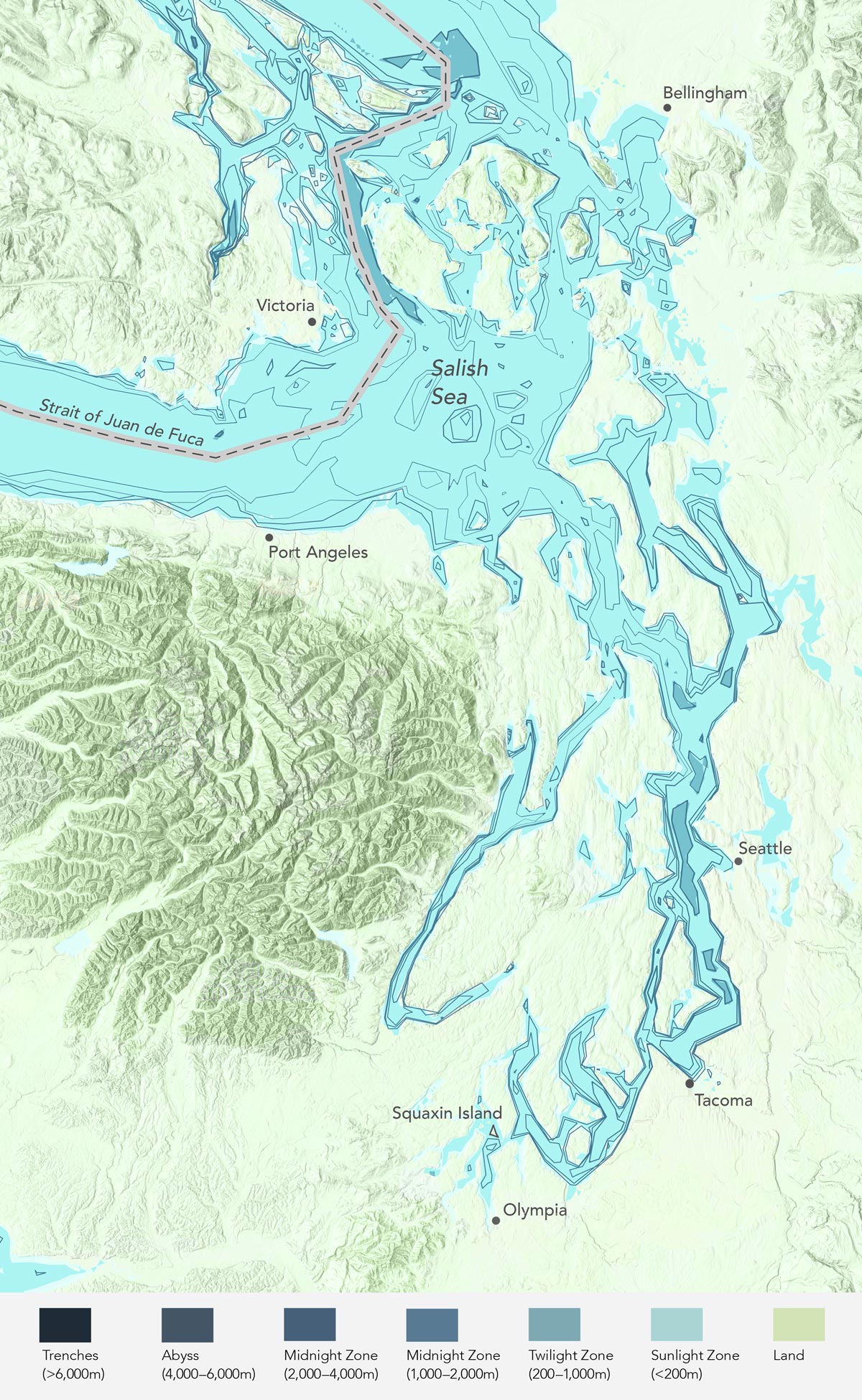Puget Sound in Washington State is a long thin appendix of water fed by both the twice daily tidal flux of the Pacific Ocean coming into it through the Strait of Juan de Fuca and by the six great rivers and estimated 2,800 streams of its watershed. This great mingling of salt and fresh water is mediated by two underwater sills, or humps; these create basins within Puget Sound which act as mixing bowls generating turbulent currents and flows. Despite its distance from the ocean, it is this flow of current and mixing that has made Puget Sound prime bull kelp habitat since the Sound was scoured by the last ice age and the glaciers retreated 10,000 years ago. The bull kelp forests of Puget Sound have provided habitat and detrital food source for the rich marine life for which Puget Sound is famous. The salmon, rockfish, crab, clams, and oysters that depend on the kelp forest have sustained generation after generation of those humans living on the Sound’s adjacent shores.
Puget Sound, Washington
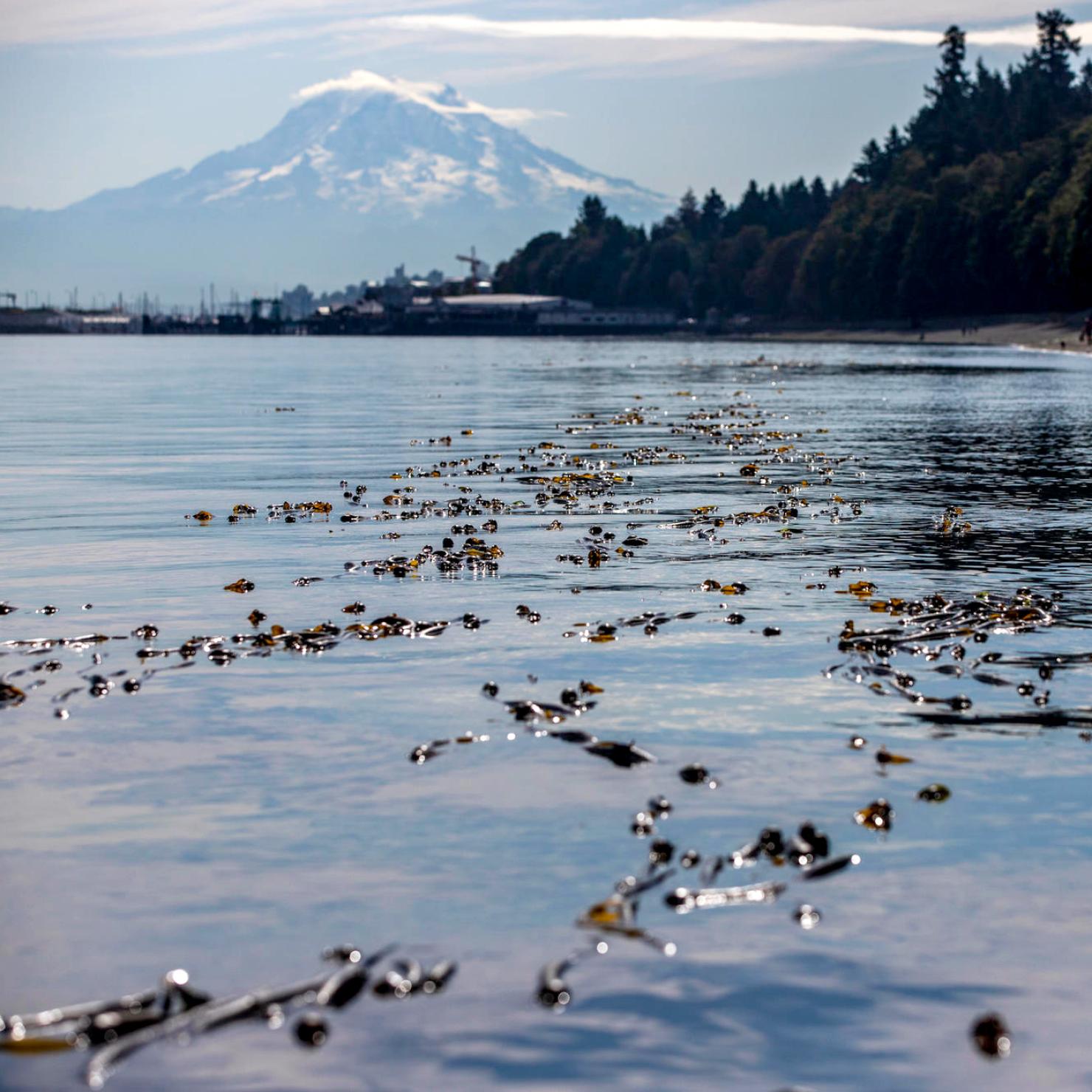
“The Puget Sound kelp community is a model of how local voices can ignite broad collective action for vital species and habitats like kelp.”
The Puget Sound Region is an amalgam of waterways: it includes the Strait of Juan de Fuca, the southern reaches of the Salish Sea including the San Juan Islands and the northern and southern sections of Puget Sound itself which extends southward past Seattle, Tacoma and, ultimately, to Olympia, WA.
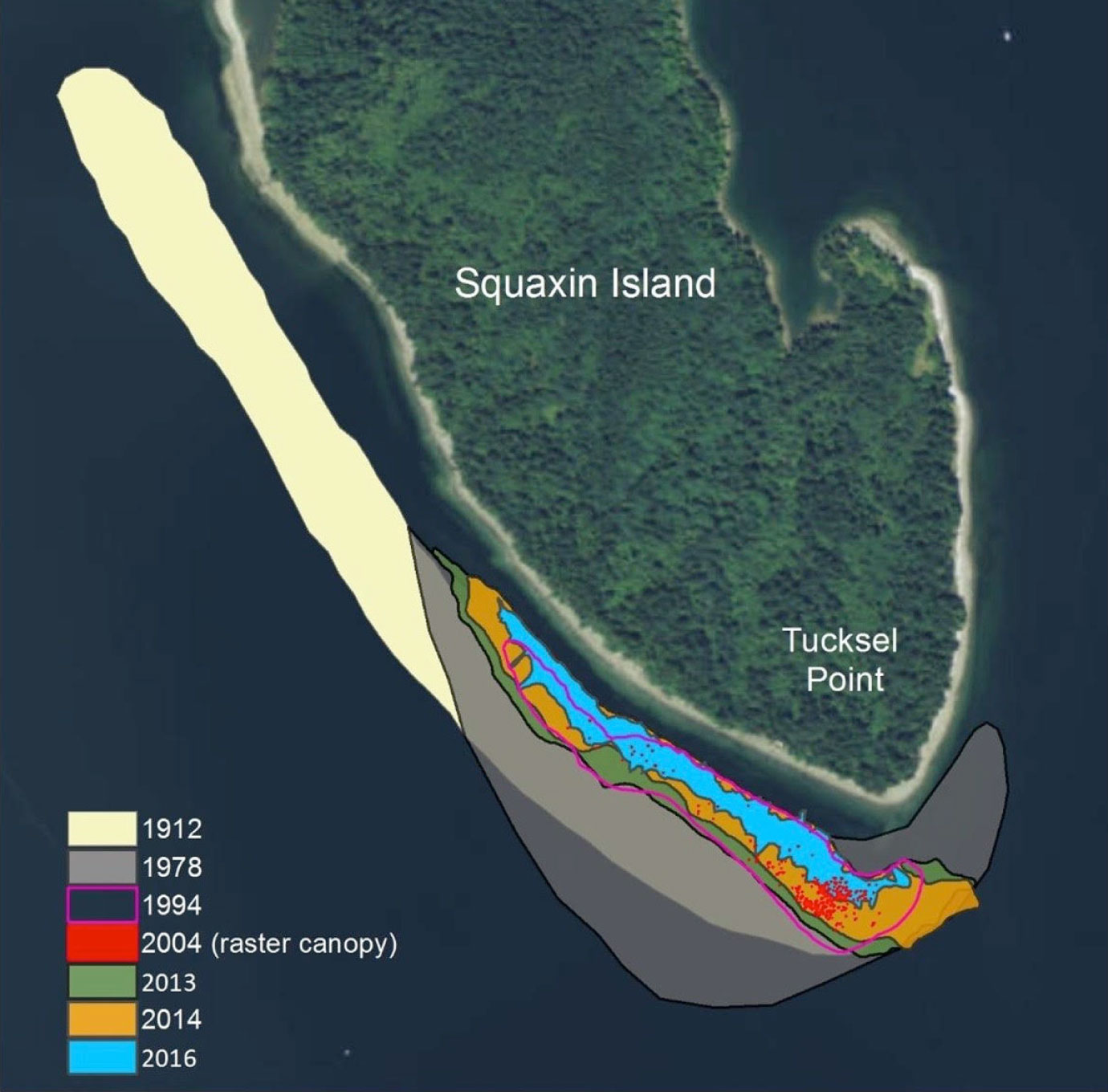
Helen Berry, WA Department of Natural Resources, Assessment of Bull Kelp at Squaxin Island, December 2017
Squaxin Island’s Unique and Persistent Bull Kelp Bed
The most remote bull kelp bed from the Pacific Ocean is at Squaxin Island, tucked in between Peale Passage, Totten Inlet and the last finger of Puget Sound that stretches south to Olympia. It might be thought that bull kelp has no business growing in a place with so little wave action, so little connection to the Pacific Ocean. And yet, the kelp density along Squaxin Island’s southern coast at Tucksel Point was listed as heavy in 1912, when the department of Agriculture was doing its west coast kelp surveys. The bull kelp here benefits from being in the direct path of waters coming out from the two southern most inlets of Puget Sound: Budd Inlet coming out from Olympia and Eld Inlet next door. The Squaxin Island Tribe has been fishing in this kelp bed since time began. The word for bull kelp in the Lushootseed language is ´’qwa?eb’ and while the tribe no longer lives on Squaxin Island, its connection to the bull kelp bed remains strong. This anomalous kelp bed has withstood the centuries of change in Puget Sound, and persisted as a vibrant kelp habitat. Even in 2019, when other kelp beds in the southern part of Puget Sound were disappearing the Squaxin Island bed persisted. But more recently, like the other bull kelp beds of Puget Sound, it is in danger of blinking out.
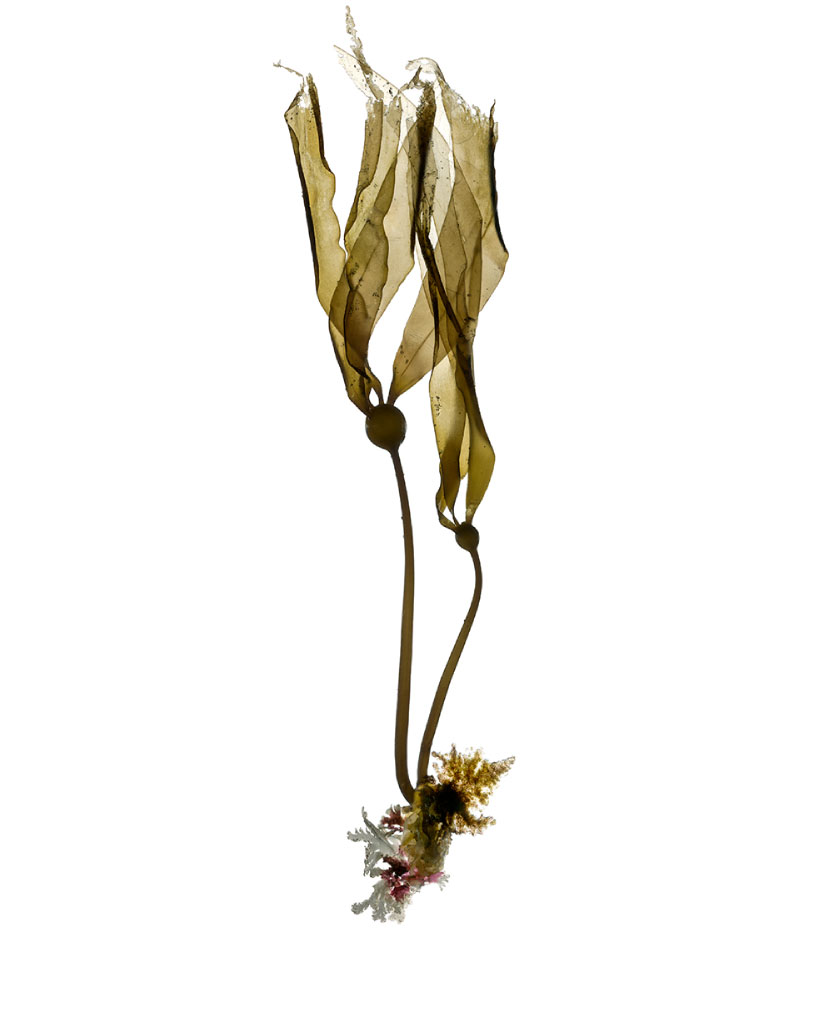
“Ever since humans followed the kelp highway to reach these shores, our lives have been interwoven with kelp... Perhaps kelp can help chart a path forward, as a natural mechanism for transforming carbon into life-building biomass.”
The issues affecting bull kelp abundance here are different than in open ocean shorelines. While Puget Sound and the Salish Sea is where the range of the three species of urchin (red, green and purple) meet—green (Strongylocentrotus droebachiensis) are found primarily in Puget Sound, red (Mesocentritus franciscanus) are found in the San Juan Islands and the purple (Strongylocentrotus purpuratus), out in the Strait of Juan de Fuca towards the open coast—these urchins do not present as a primary stressor on kelp in Puget Sound as they do in other locations. While there are kelp crabs and other kelp grazers, restoration efforts do not involve urchin removal like coastal regions to the south. Tom Mumford, a long-time kelp expert in Washington State, reminds us that Puget Sound has put other stresses on kelp forest systems. He puts it in the ever-handy baseball imagery:
Strike 1: Since the late 1800s Puget Sound has been “replumbed.” Dams built on almost every river altered the timing, quantity, and quality of freshwater discharge, as well changing sediment inputs affecting the substrate available to kelp.
Strike 2: What is in the discharge from these altered rivers? Do we know? Toxins?
Strike 3: We have fished down the food web. Top predators such as whales, otters, urchins, sea cucumbers are mostly gone. The disruption their removal creates for the entire food web including the primary producers, kelp and other algae, is profound. Trophic cascades are real.
The Coup D’Etat: Rising ocean temperatures.
And Tom concludes: The complex, non-linear interactions between each stressor/strike can be compounding—exacerbating the problems.
Sea Otter and Sunflower Sea Star: Are They Here?

No, there are no sea otters in Puget Sound.
Very rarely a pioneering sea otter from the outer coast will venture further into Puget Sound than its companions, but no population within Puget Sound has been re-established. River otters are plentiful however and easily confused for sea otters.

There are only a few sunflower sea stars in the Puget Sound region.
Most sunflower sea stars are found in the northern parts of the Salish Sea. Before the sea star wasting disease of 2014, large, hunter sunflower sea stars were everywhere in Washington State waters. It is with their disappearance that their importance as a top predator to the ecologies state-wide was recognized. The laboratories at Friday Harbor Labs are breeding baby sunflower sea stars, using wild-caught, local sunflower sea stars, but it is hard, diligent work.
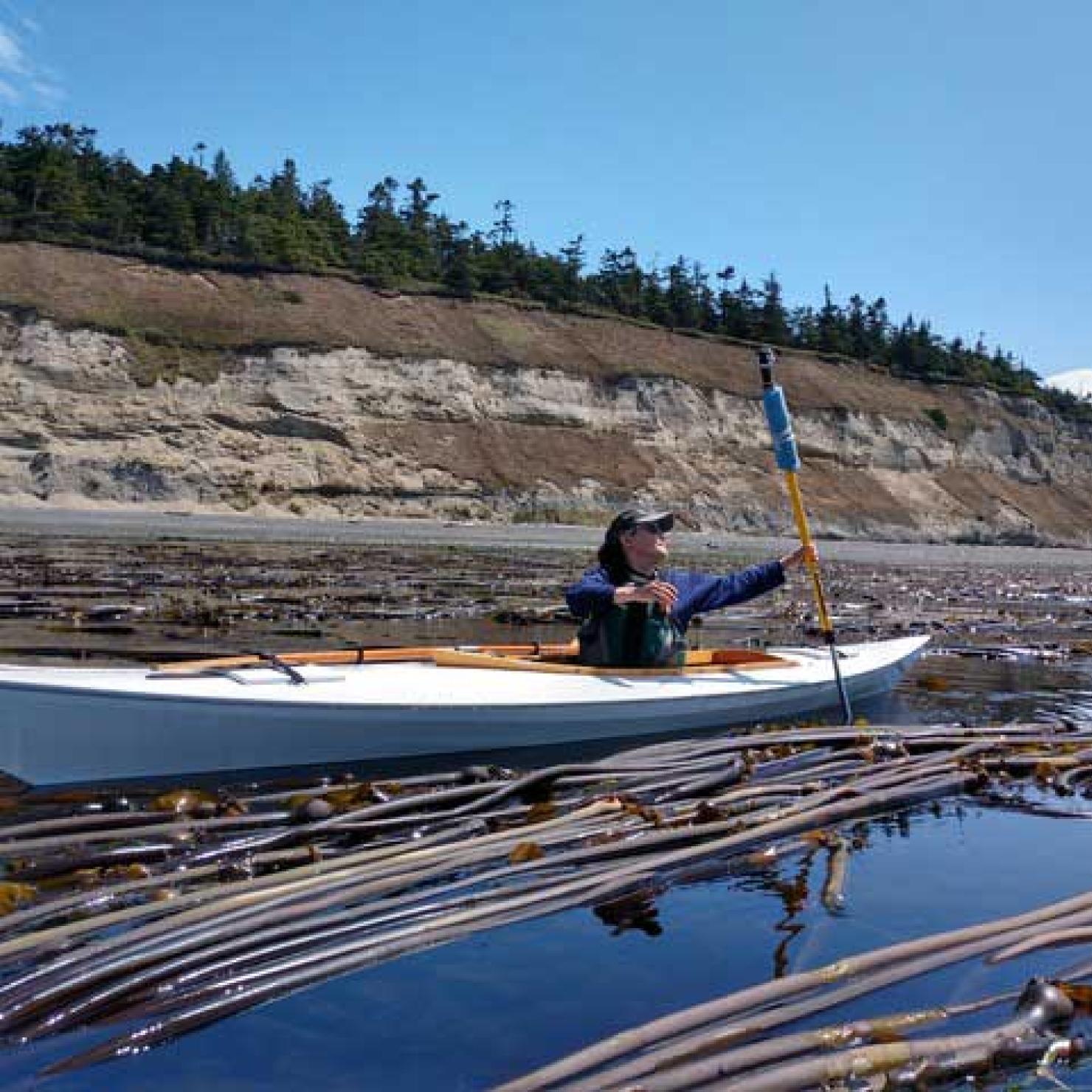
Kelp kayak monitoring at Ebeys Landing on Whidbey Island
“A unique, bottom-up approach was created to restore and protect marine resources in the area. The Northwest Strait Initiative was designed to harness the energy and expertise of local residents and empower them with opportunities to actively protect and restore marine resources.”
Of the many community-based groups and collaborations across Puget Sound and the Salish Sea concerned with marine ecosystem health and kelp habitats in particular, two stand out: The Puget Sound Restoration Fund and The Northwest Straits Commission. The Puget Sound Restoration Fund has been focused on kelp recovery in Puget Sound for longer than anyone. They have created partnerships across many communities and sectors and hosted the Kelp Highway Expedition in 2021, to bring together citizen scientists and artists, food and tribal communities. They are currently implementing a comprehensive kelp surveying initiative called Eyes on Kelp.
Betsy Peabody, the founder of PSRF, emphasizes the importance of kelp to the future of Puget Sound and the long history of the human relationship to kelp:
“Ever since humans followed the kelp highway to reach these shores, our lives have been interwoven with kelp. We have navigated by it, found safe harbor in it, eaten it, used it in cultural practices, and harvested the animals great and small that live in it. Now we need to look to it for our future. We have unleashed anthropogenic carbon into the world, both the atmosphere and the oceans, and we need all the allies we can find to help soak it up. Perhaps kelp can help chart a path forward, as a natural mechanism for transforming carbon into life-building biomass.”
The Northwest Straits Initiative was established as a new and different approach to help restore and protect the marine resources of the Northwest Straits region—including The Strait of Juan de Fuca, San Juan Islands and Northern Puget Sound—designed to harness the energy and expertise of local residents and empower them with opportunities to actively protect and restore the marine resources.
Since 1998, the Northwest Straits Initiative has worked as a community-led collaboration to protect and restore the marine environment of northwest Washington State. The Initiative includes seven county-based Marine Resources Committees (MRCs) that are made up of volunteers representing diverse perspectives in their communities. They serve as local advisory groups to county government and lead locally based marine conservation efforts. The Northwest Straits Commission coordinates MRCs and regional kelp conservation and recovery efforts in Puget Sound. They contribute community science and place-based knowledge through kayak-based bull kelp monitoring, and lead coordination of the Puget Sound Kelp Conservation and Recovery Plan. These efforts spurred a wave of collaborative kelp conservation efforts across tribes, nonprofits, state and federal agencies, universities, and local communities. This serves as a model of how local voices can ignite broad collective action for vital species and habitats like kelp.
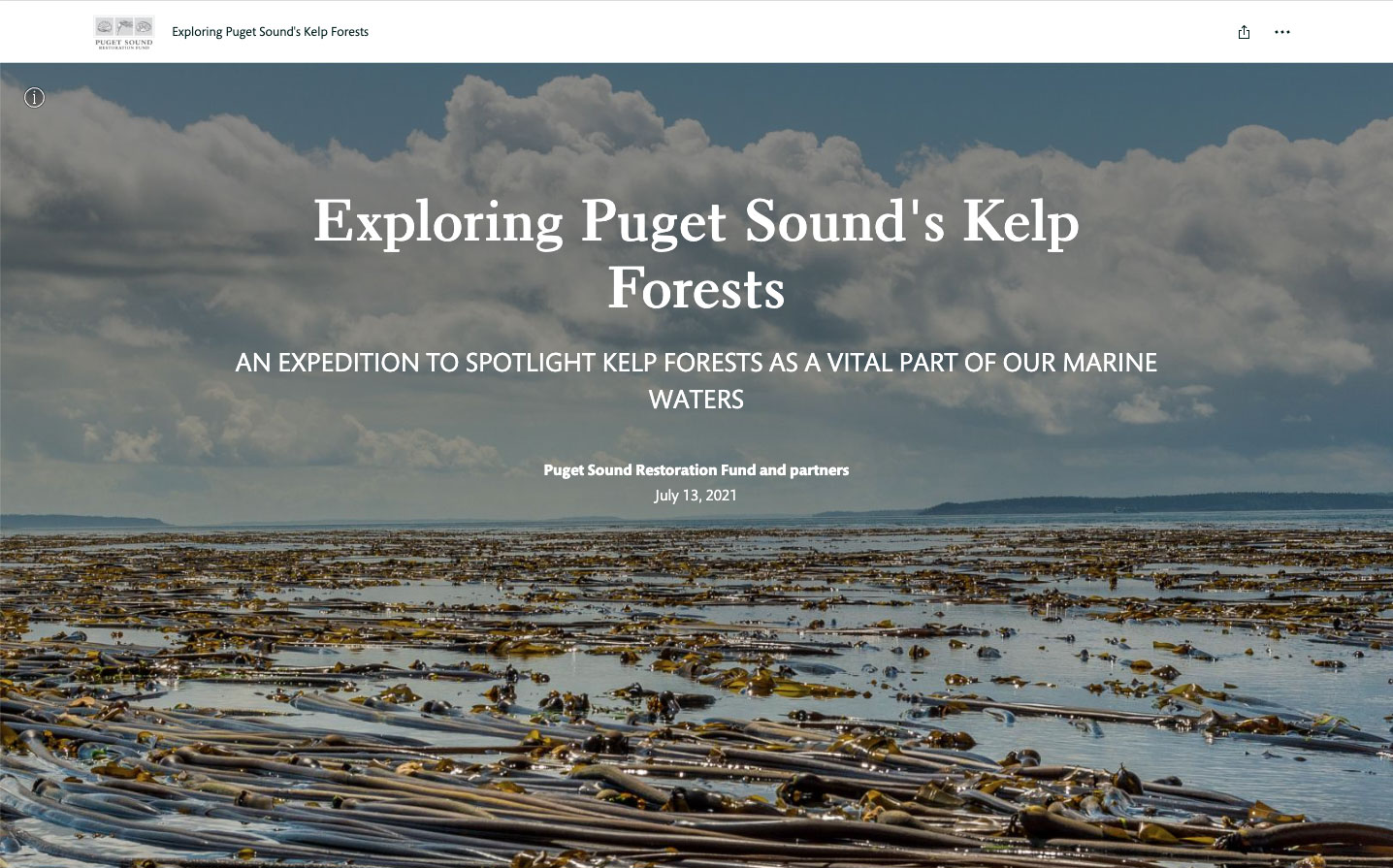
The Kelp Journeys Expedition, 2021, was organized by The Puget Sound Restoration Fund, and included tribes, artists, kelp survey volunteers and others.
Resources
This is just the beginning. Please go to our Puget Sound, Washington Resources Page to learn more about the kelp work being done in this region.




